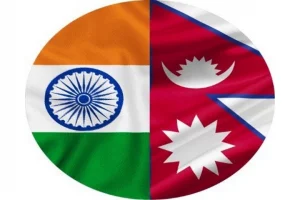It is no secret that during the decades British ruled India – the jewel in the crown – they looted whatever was valuable, including precious stones and jewellery from the royalty ruling different princely States and principalities.
Now a discovery of a 46-page file in the India Office archives brings to light some of these gems and jewels that had made their way from India to the British royal family collection.
This file finds mention in The Guardian newspaper report which is a part of the publication’s ‘Cost of the crown’ series. Incidentally, the details on this file were gathered when Queen Mary, grandmother of Elizabeth II, was keen to know the imperial origins of her jewels in 1912.
Among many objects, the file talks about an emerald-encrusted gold girdle which was used during Maharaja Ranjit Singh’s period to decorate his horses. This now is part of the royal collection of King Charles.
That the British were always in awe of the riches of Indian royalty, including their precious stones and jewellery is evident from a journal recording the tour in 1837 of Punjab by Fanny Eden, a British society diarist and her brother George, who was Governor-General of India then.
Visiting Maharaja Ranjit Singh — who had signed a friendship treaty with the British six years earlier—in Lahore, Eden wrote: “He puts his very finest jewels on his horses, and the splendour of their harness and housings surpasses anything you can imagine. If ever we are allowed to plunder this kingdom, I shall go straight to their stables.”
After 12 years of this incident in 1849, Maharaja’s youngest son and heir, Duleep Singh signed the last Treaty of Lahore to hand over Punjab over to British East India Company and among the spoils of this act were the horses’ emeralds.
This Treaty also witnessed the ceding of the world famous Koh-i-Noor to Queen Victoria like other assets of the Maharaja.
The Guardian report goes on to uncover another jewel called Timur ruby, a
a “short necklace of four very large spinel rubies”, the largest of which is a 325.5-carat spinel. According to research done by Susan Stronge in 1996, this piece was never owned by the Mongol conqueror.
Yet another Indian item chronicled is a pearl necklace which had 224 large pearls. It is believed that this too belonged to Ranjit Singh’s collection.
Ironically, Queen Mary’s decision to know about her jewels and gems was spurred by sheer curiosity to know the origins of her collection rather than any moral compulsion or concern about their colonial origins.




















